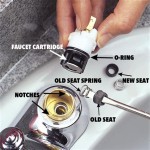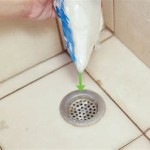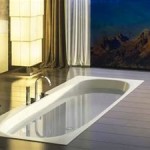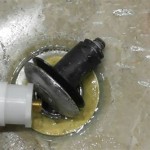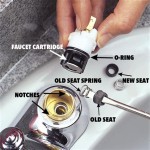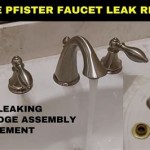Walk-In Bathtubs With Shower Enclosures: A Comprehensive Guide
Walk-in bathtubs with shower enclosures represent a significant advancement in bathroom accessibility and safety. They are designed to offer a secure and comfortable bathing experience for individuals with mobility limitations, seniors, and anyone seeking a safer alternative to traditional bathtubs. This article provides a detailed examination of walk-in bathtubs with shower enclosures, exploring their features, benefits, installation considerations, and available options.
The primary advantage of a walk-in bathtub is the low threshold that allows easy entry and exit. This feature minimizes the risk of slips and falls, a common concern in bathrooms. The addition of a shower enclosure further enhances the functionality, providing a versatile solution that accommodates both bathing and showering preferences. The combination of these features makes walk-in tubs with shower enclosures a popular choice for aging-in-place renovations and accessibility upgrades.
These specialized tubs typically include a watertight door, a built-in seat, grab bars, and non-slip surfaces. The enclosures can range from simple shower curtains to more elaborate glass doors and panels. The selection of a walk-in bathtub with shower enclosure requires careful consideration of individual needs, bathroom dimensions, and budget constraints.
Key Features and Benefits
Walk-in bathtubs with shower enclosures are characterized by several key features that contribute to their safety and convenience. These features include the low-entry threshold, integrated seating, handrails, and the shower enclosure itself. Each element is designed to enhance the user experience and address specific accessibility challenges. The benefits of these features extend beyond safety, encompassing comfort, hygiene, and independence.
The low-entry threshold is arguably the most critical feature. It eliminates the need to step over a high tub wall, reducing the risk of falls. The threshold height typically ranges from a few inches to less than six inches, making it easily accessible for individuals with limited mobility. Some models offer even lower thresholds, further improving accessibility.
Integrated seating is another essential feature, providing a comfortable and stable place to sit while bathing. The seat height is usually designed to facilitate easy transfer from a wheelchair or walker. Many models also include contoured seating for added comfort and support. The presence of a seat allows users to bathe in a more relaxed and dignified manner.
Handrails, or grab bars, are strategically positioned to provide additional support and stability during entry, exit, and while moving around inside the tub. These grab bars are typically made of durable, non-slip materials and are securely anchored to the tub's structure. The placement and number of grab bars can be customized to meet individual needs.
The shower enclosure, whether it is a curtain, a sliding glass door, or a more complex system, contains water within the bathing area and prevents splashes and spills. This helps to maintain a safe and dry environment in the bathroom, further reducing the risk of falls. The type of enclosure chosen can significantly impact the overall aesthetics and functionality of the walk-in tub system.
Beyond these core features, many walk-in bathtubs with shower enclosures offer additional amenities, such as hydrotherapy jets, air massage systems, and chromatherapy lighting. These features can enhance the bathing experience and provide therapeutic benefits. Hydrotherapy jets provide a massaging action that can relieve muscle pain and improve circulation. Air massage systems gently stimulate the skin, promoting relaxation and reducing stress. Chromatherapy lighting uses colored lights to create a calming and therapeutic atmosphere.
Installation Considerations
The installation of a walk-in bathtub with shower enclosure is a significant undertaking that requires careful planning and professional expertise. Several factors must be considered to ensure a successful installation, including bathroom dimensions, plumbing requirements, electrical specifications, and structural support. Proper installation is crucial for the safe and reliable operation of the walk-in tub system.
Bathroom dimensions are a primary consideration. Walk-in bathtubs typically require more space than standard bathtubs. The available space must be sufficient to accommodate the tub itself, the shower enclosure, and any necessary clearances for access and movement. It is essential to accurately measure the bathroom and compare these measurements to the dimensions of the chosen walk-in tub model. Some models are designed to fit into the space of a standard bathtub, while others may require modifications to the bathroom layout.
Plumbing requirements are another critical factor. Walk-in bathtubs typically require a dedicated water supply line for filling and a separate drain line for emptying. The existing plumbing may need to be modified or upgraded to accommodate these requirements. It is essential to ensure that the water supply and drain lines are properly connected and comply with local plumbing codes. The drain mechanism of a walk-in tub is often designed for rapid draining to minimize the time spent waiting for the water to empty before exiting the tub.
Electrical specifications must also be considered, particularly if the walk-in bathtub includes features such as hydrotherapy jets, air massage systems, or heated seats. These features require a dedicated electrical circuit and must be properly grounded to ensure safety. A licensed electrician should be consulted to ensure that the electrical system is adequate and complies with local electrical codes. Ground Fault Circuit Interrupters (GFCIs) are essential for preventing electrical shocks in wet environments.
Structural support may also need to be addressed. Walk-in bathtubs, especially those filled with water and occupied by a person, can be quite heavy. The floor structure may need to be reinforced to support the weight of the tub and its contents. A qualified contractor can assess the structural integrity of the floor and make any necessary modifications. Failing to address structural support can lead to serious problems, such as floor sagging or even collapse.
The shower enclosure installation is also an important part of the overall process. The enclosure must be properly sealed to prevent water leaks and damage to surrounding surfaces. The type of enclosure chosen will influence the installation procedure. Shower curtains are relatively easy to install, while glass doors and panels require more precise measurements and installation techniques.
Accessibility considerations should also be taken into account during the installation process. The placement of grab bars, the height of the seat, and the location of controls should be carefully considered to ensure that the walk-in tub is accessible and comfortable for the user. Professional installers can provide guidance on optimal placement and configuration.
Available Options and Considerations
The market for walk-in bathtubs with shower enclosures offers a diverse range of options to suit different needs, preferences, and budgets. These options vary in terms of size, features, materials, and style. Selecting the right model requires a thorough assessment of individual requirements and a careful comparison of available options.
Size is a primary consideration. Walk-in bathtubs are available in various sizes, ranging from compact models designed to fit into standard bathtub spaces to larger models that offer more room and comfort. The size of the bathtub should be appropriate for the user's body size and mobility level. It is also important to consider the available space in the bathroom and ensure that the chosen model will fit comfortably.
Features are another important factor to consider. As mentioned earlier, walk-in bathtubs can be equipped with a variety of features, such as hydrotherapy jets, air massage systems, chromatherapy lighting, and heated seats. The choice of features will depend on individual preferences and therapeutic needs. Some individuals may benefit from the massaging action of hydrotherapy jets, while others may prefer the gentle stimulation of an air massage system. The cost of the bathtub will typically increase with the number of features included.
Materials used in the construction of the walk-in bathtub can also vary. Common materials include acrylic, fiberglass, and steel. Acrylic is a popular choice due to its durability, ease of maintenance, and resistance to stains and scratches. Fiberglass is a more affordable option, but it may not be as durable as acrylic. Steel is a strong and durable material, but it can be more expensive and may be susceptible to rust if not properly coated.
The style of the walk-in bathtub and shower enclosure is also an important consideration. Walk-in bathtubs are available in a variety of styles, ranging from traditional to contemporary. The shower enclosure can be integrated into the bathtub design or added separately. The style of the bathtub and shower enclosure should complement the overall décor of the bathroom. Common shower enclosure options include shower curtains, sliding glass doors, and hinged glass doors.
The door type is a critical consideration for walk-in bathtubs. Inward swinging doors, outward swinging doors, and sliding doors are the most common options. Inward swinging doors are typically more watertight but may require more space in the bathroom. Outward swinging doors are easier to open in confined spaces but may not be as watertight. Sliding doors can be a good option for small bathrooms but may be more difficult to operate for individuals with limited dexterity.
The cost of a walk-in bathtub with shower enclosure can vary significantly depending on the size, features, materials, and style. Basic models can cost several thousand dollars, while more elaborate models with advanced features can cost upwards of ten thousand dollars. Installation costs can also add significantly to the overall expense. It is important to obtain quotes from multiple contractors and compare prices before making a decision. Financing options may be available to help offset the cost of the walk-in bathtub. Insurance coverage may also be available in some cases, particularly if the walk-in bathtub is deemed medically necessary.
Warranty coverage is another important factor to consider. Most walk-in bathtub manufacturers offer warranties that cover defects in materials and workmanship. The duration and scope of the warranty can vary. It is important to carefully review the warranty terms and conditions before purchasing a walk-in bathtub. A longer warranty period provides greater peace of mind and protection against unexpected repairs.
Customer reviews and testimonials can provide valuable insights into the performance and reliability of different walk-in bathtub models. Reading reviews from other users can help to identify potential problems and assess the overall satisfaction of customers. Online forums and consumer review websites can be valuable resources for gathering information.
Meditub 3140 Walk In Bathtub With Shower Enclosure

Bathtub Inside Walk In Shower Layout And Design Ideas Ibathtub

Bathselect Rio High Glass Door Walk In Tub Set Special Freestanding Bath Tubs

Walk In Tub Shower Combo Kohler Bath

Best Walk In Tub Shower Combination Options Of 2024 Modernize

4 Fold Shower Screen Accessories Ellas Bubbles Walk In Tubs

Walk In Tub Shower Combo Kohler Bath

Walk In Tub With Shower Enclosures Frameless Doors

Na 1700 Easy Access Walk In Shower Bath With Glass Door And Screen Accc1700 1

Stylish Bathtubs And Shower Enclosures Modern Bathroom Design Ideas From Teuco
Related Posts

